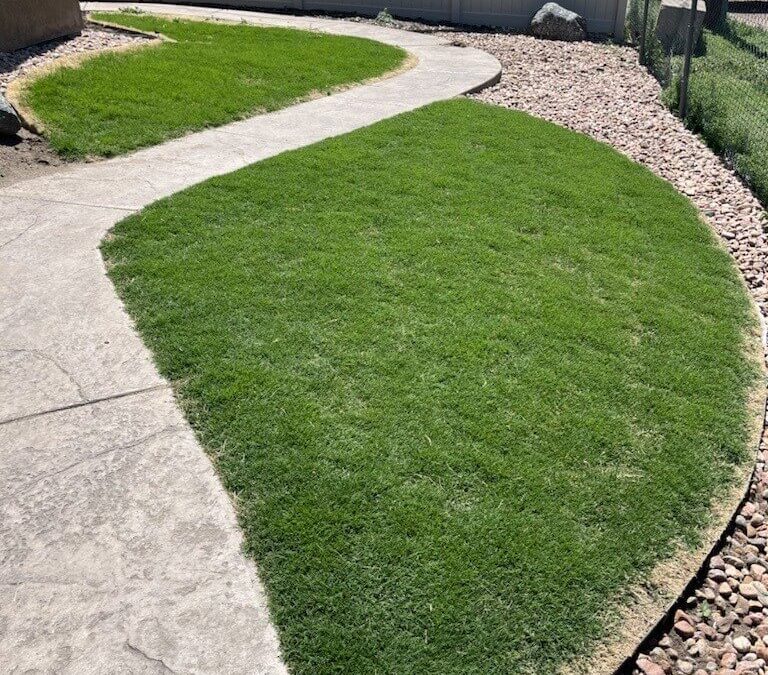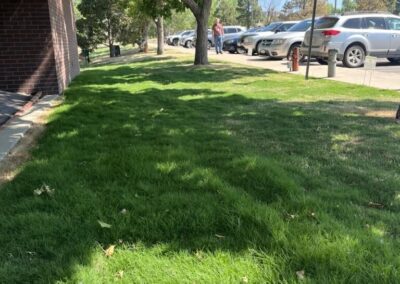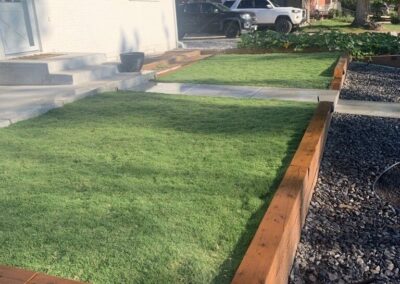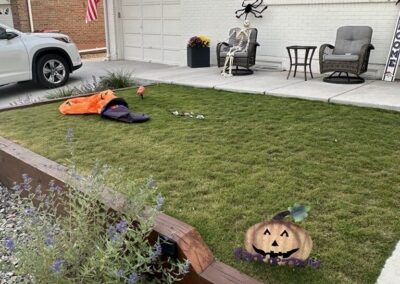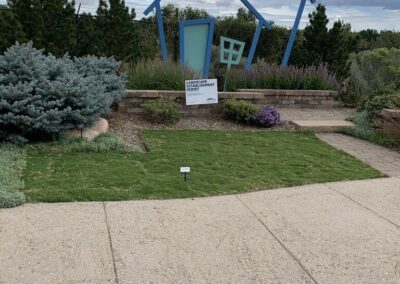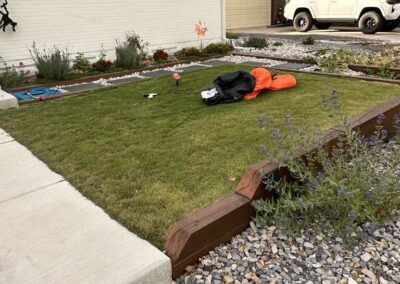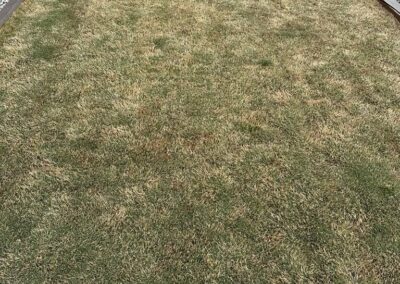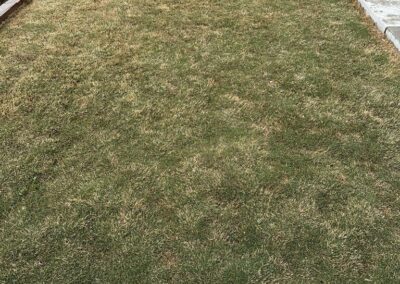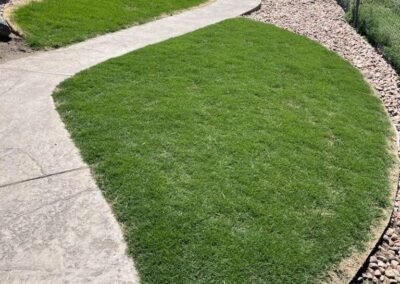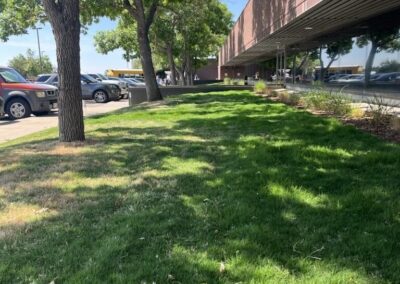Cold Hardy Bermudagrass
Cynodon spp.
Bermudagrass is a warm-season turf grass that can be used for sports fields, golf courses, and lawns.
Active Growth
June-October
Light Needs
Full Sun
Origin
Introduced
Best For:
- Full-sun landscapes
- Heavy-use areas
- Low-maintenance landscapes
- Lawn replacements
- Dense, uniform ground cover
- Hot microclimates
Not Suited For:
- Heavy shade landscapes
- Elevations above 6,500 feet
- May spread into adjacent areas through runners or clippings of stolons (runners)
Tolerates: Drought, variations in soil, extreme heat, and short mowing.
Irrigation need (FRONT RANGE)
No Irrigation
Turf Irrigation
Water Use: Requires about ⅓ of the water of a traditional lawn. Water once per week or less, May to October
Using Cold Hardy Bermudagrass
Bermudagrass is a low-water turfgrass often used in southern climates. Some species and cultivars are being tested for long-term cold hardiness in Colorado. Bermudagrass needs at least six hours of sun to thrive and grows best up to 6,500 feet in elevation—though it can grow higher if the area is especially warm and sunny. This grass turns green later in spring (mid May to June depending on the elevation) and brown earlier in fall (mid October) than a traditional lawn. It can withstand varied soils, mowing heights, and even temperatures: cultivars like Tahoma 31 have proven to be durable and cold-tolerant in initial testing. Proceed with caution, however, as an extremely cold winter could result in significant winter kill.
Bermudagrass Attributes
- Warm-season grass
- Stoloniferous and rhizomatic growth habit leads to aggressive spreading
- Green color
- Leaf height of 1-5 inches
- Dense, uniform ground cover
- Tolerant of salts like ice melt and pet urine
- Available in sod
Installation
- Tahoma 31 bermudagrass can be installed as sod or sprigs
- Other cultivars are often planted by seed
- Ideal planting time is June 1 through August 15
- Soil amendments are not needed for installation
General
Bermudagrass sod will establish quickly. Seeding projects will take longer to achieve full soil coverage.
Weed Management
Bermudagrass sod should be weed-free. If establishing bermudagrass from seed, use herbicides labeled safe for bermudagrass.
Watering for Establishment
The irrigation goal for the first two weeks of establishment is to keep the soil consistently moist but avoid runoff and pooling. Week three, water once every two to three day. Week four, water once every three to seven days. If irrigation problems occur it is important to fix them as quickly as possible in the early stages of establishment.
Mowing During Establishment
To even out the grass, mow it very short once it has rooted and established. Scalping in this stage is not a concern; the grass will grow back quickly and look more uniform.
Long-Term Watering
Bermudagrass requires 8-12 inches of irrigation per season once established. Once established water once per week or less starting in May to September. Watering is not required while grass is still dormant (brown). Winter water is not required. Once the Bermudagrass stand has matured, the frequency of watering should be paired to meet the project goals and desired grass appearance.
Mowing
Mowing frequency should be paired with your desired landscape appearance and project goals. Bermudagrass can be mowed as frequently as once per week, or as infrequently as once per growing season. Both a rotary mower and a reel mower will work. Bermudagrass can tolerate short mowing/scalping and will grow back quickly.
Weed Control
Long-term weed control will keep Bermudagrass healthy and attractive. Use products labeled as safe for Bermudagrass. Many are available for sale, but may be harder to find in stores.
Fertilizing
Apply nitrogen at 1 lb/1000 square feet of area. Fertilize twice per year in early June and mid-August. If you use lawn with weed control, make sure it is labeled as safe for Bermudagrass.
Start your project
Discover how to plan and implement a native grass project for long-term success.
